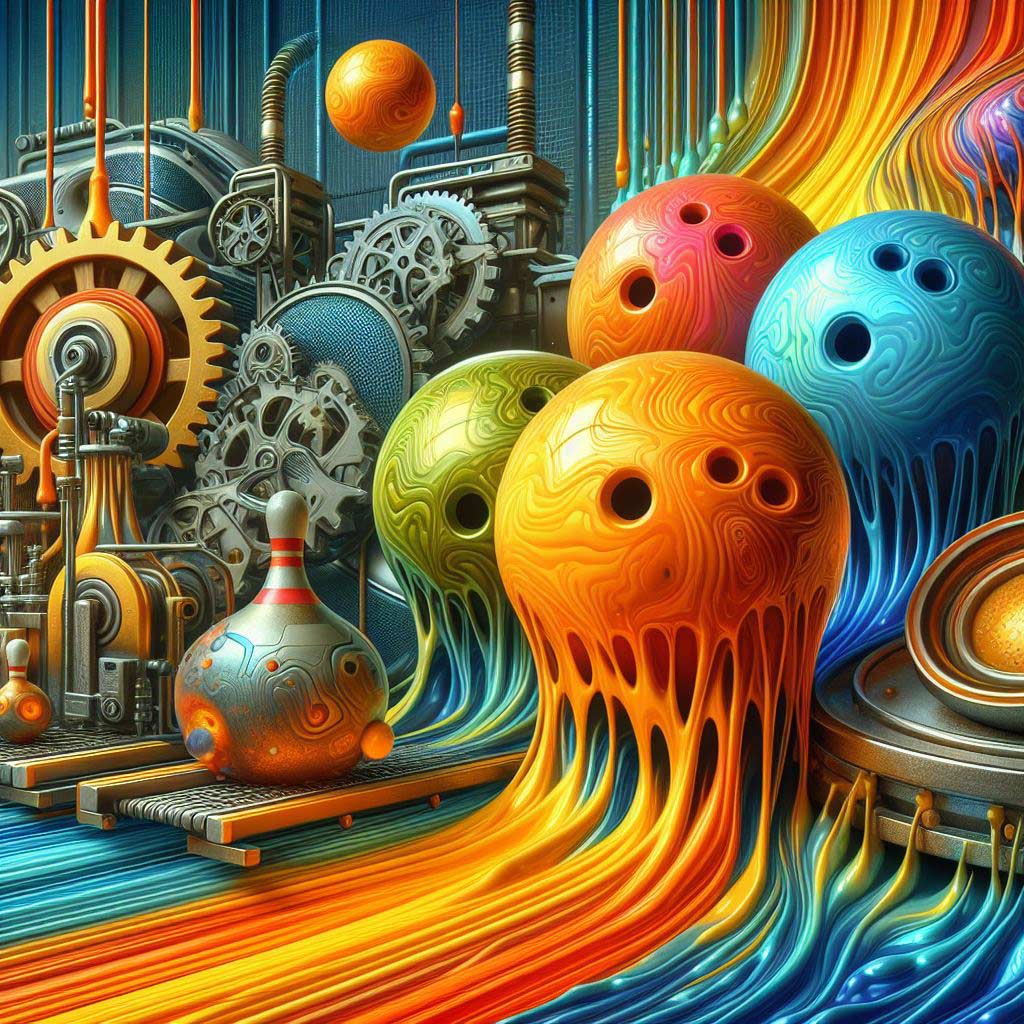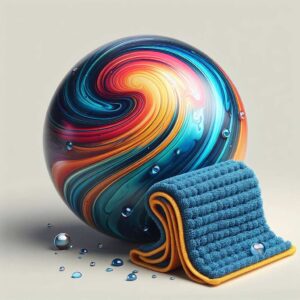Have you ever wondered about the origins of those sleek, perfectly crafted bowling balls that effortlessly glide down the lanes?
These unassuming spheres are the result of a meticulously orchestrated manufacturing process that spans continents and involves specialized materials and techniques.
From the moment a bowler grips a ball until it thunders towards the pins, each roll is a testament to the craftsmanship and innovation behind bowling ball production.
In this comprehensive guide, we’ll unravel the fascinating journey of where bowling balls are made, shedding light on the intricate steps, key regions, and emerging trends that shape this global industry.
History of Bowling Ball Manufacturing
The evolution of bowling ball manufacturing is a story that spans centuries, with each era introducing new materials and techniques to enhance performance and durability.
In the early days, bowling balls were carved from wood, a tradition that persisted until the late 19th century when the introduction of rubber ushered in a new era.
As the sport gained popularity, manufacturers sought more advanced materials, leading to the development of plastic and, eventually, the game-changing reactive resin coverstock that dominates modern bowling ball construction.
Throughout this journey, certain regions have emerged as major manufacturing hubs, each contributing its unique expertise and resources to the industry.
The United States, with its rich bowling heritage, has been at the forefront of innovation, while Asia’s rise as a manufacturing powerhouse has brought cost advantages and increased global accessibility.
Materials Used in Modern Bowling Ball Production
At the heart of every bowling ball lies a carefully engineered combination of materials, each serving a specific purpose in optimizing performance and delivering that coveted hooked trajectory.
The Reactive Resin Coverstock:
The outer shell of a modern bowling ball is crafted from a specialized material known as reactive resin. This material is available in three distinct types: particle, pearl, and solid. Each variation offers unique characteristics that influence the ball’s traction, skid, and overall motion on the lane.
- Particle coverstock: Renowned for its aggressive traction and backend motion, particle covers are favored by bowlers seeking maximum hook potential.
- Pearl coverstock: With a smoother, more predictable reaction, pearl covers strike a balance between controlled skid and backend continuation.
- Solid coverstock: Prized for their durability and consistent motion, solid covers are ideal for bowlers seeking a more predictable and controlled performance.
The Core:
Nestled within the reactive resin shell lies the core, a dense weight block that dictates the ball’s overall dynamics. Cores are available in three primary configurations: pancake, symmetrical, and asymmetrical.
- Pancake cores: With their distinct flat shape, pancake cores promote an earlier and more pronounced hooking motion, making them a popular choice for bowlers seeking aggressive backend performance.
- Symmetrical cores: As the name implies, symmetrical cores distribute weight evenly, resulting in a more stable and predictable motion on the lane.
- Asymmetrical cores: By intentionally shifting weight distribution, asymmetrical cores introduce a specific bias that enhances the ball’s flaring potential and overall hooking action.
Other Components:
In addition to the coverstock and core, bowling balls incorporate a variety of other components, each playing a crucial role in the manufacturing process.
Specialized adhesives ensure a secure bond between the core and coverstock, while finishes and logos add the final touches, enhancing both aesthetics and performance.
Manufacturing Process Step-by-Step
The journey of a bowling ball begins with the creation of its core. Through a process called injection molding, liquid or granular material is injected into a mold and allowed to cool and solidify, forming the desired core shape and density.
Next, the coverstock material is meticulously prepared and applied. Reactive resin is mixed with specific additives and colorants, then poured into a coverstock mold. The core is carefully positioned within this mold, ensuring a precise and uniform bond between the two components.
After the coverstock has cured, the ball undergoes engraving and finishing touches. This may include adding logos, adjusting the final surface texture, or applying specialized finishes to enhance traction or preserve the ball’s pristine condition.
Throughout the manufacturing process, stringent quality control measures are implemented. Bowling balls are rigorously tested for weight distribution, balance, and overall performance to ensure they meet stringent industry standards and provide consistent, reliable results on the lanes.
Key Bowling Ball Manufacturing Regions
While bowling balls are produced globally, several regions have emerged as prominent manufacturing hubs, each contributing its unique strengths and expertise to the industry.
United States:
With a rich history in bowling, the United States has long been a leader in bowling ball production. Major brands like Storm, Roto Grip, and 900 Global have established state-of-the-art facilities in states like Missouri and Nevada, leveraging cutting-edge technology and expert craftsmanship to produce high-performance bowling balls.
Asia:
In recent decades, Asia has risen as a dominant force in bowling ball manufacturing. Countries like China, Japan, and Korea have capitalized on their skilled labor force and cost-efficient production capabilities to secure a significant share of the global market.
Brands like Motiv, Hammer, and Ebonite have established manufacturing facilities in these regions, taking advantage of the region’s competitive advantages.
Europe:
While not a major manufacturing hub, Europe has carved out a niche in the production of high-performance, premium bowling balls. Countries like Germany and Sweden are home to specialized manufacturers that prioritize precision engineering and innovative technologies, catering to bowlers seeking top-tier equipment.
Factors Influencing Manufacturing Location
The decision of where to establish bowling ball manufacturing facilities is influenced by a variety of factors, each playing a crucial role in optimizing production efficiency and cost-effectiveness.
- Access to Raw Materials: Proximity to reliable sources of reactive resin, metals, and other raw materials is essential for streamlining the supply chain and minimizing transportation costs. Manufacturers often strategically locate their facilities near these resource hubs to ensure a steady flow of high-quality inputs.
- Labor Costs: As with many manufacturing industries, labor costs are a significant consideration when determining production locations. Regions with lower labor costs, such as parts of Asia, can offer substantial cost savings, enabling manufacturers to remain competitive in the global market.
- Proximity to Major Markets: Establishing manufacturing facilities in close proximity to major consumer markets can significantly reduce shipping costs and lead times, improving overall efficiency and customer satisfaction. This factor often plays a role in the geographic distribution of bowling ball production facilities.
- Regulations and Trade Policies: Government regulations, trade agreements, and tariffs can significantly impact the feasibility and profitability of manufacturing operations in different regions. Manufacturers must carefully navigate these complexities to ensure compliance and maximize their competitive advantage.
Sustainability and Eco-Friendly Initiatives
As environmental concerns grow, the bowling ball industry is actively embracing sustainability and eco-friendly practices. Manufacturers are exploring innovative ways to reduce their carbon footprint and promote responsible resource utilization.
- Recycling and Reusing Materials: Many companies have implemented comprehensive recycling programs, ensuring that excess materials and byproducts from the manufacturing process are repurposed or recycled, reducing waste and minimizing environmental impact.
- Reducing Environmental Impact: Manufacturers are investing in energy-efficient production techniques, implementing water conservation measures, and exploring renewable energy sources to power their facilities. These efforts aim to minimize the industry’s overall ecological footprint and contribute to a more sustainable future.
- Emerging “Green” Bowling Ball Technologies: Research and development efforts are underway to create bowling balls using eco-friendly materials and processes. From biodegradable components to renewable resource-based resins, these innovations have the potential to revolutionize the industry while aligning with environmental stewardship goals.
Conclusion:
The journey of a bowling ball is a remarkable testament to human ingenuity and the relentless pursuit of perfection. From the meticulous selection of materials to the intricate manufacturing processes and global distribution networks, each roll on the lanes is the culmination of a complex, globalized operation.
As technology continues to evolve, the bowling ball industry remains at the forefront of innovation, constantly pushing boundaries to enhance performance, durability, and sustainability.
Whether it’s the development of advanced reactive resins, precision-engineered cores, or eco-friendly manufacturing techniques, the future of bowling ball production promises to be an exciting chapter in the sport’s rich history.
So, the next time you step onto the lanes and feel the weight of a bowling ball in your hands, take a moment to appreciate the incredible journey it has undertaken.
From the skilled hands of manufacturers across continents to the thunderous impact against the pins, each roll is a celebration of human craftsmanship and the enduring allure of this beloved sport.





